Our team at Fine Art Restoration Company often enjoy looking into the history of artworks we receive for conservation work. Many artworks come to us from the South East and have connections to the area, which is why we have chosen famous Kent artists as the second chapter in our ongoing series of regional artist profiles – you can see our first which is focused on Cumbria here.
 Above: a watercolour painting entitled ‘The Weald of Kent’ by Samuel Palmer, 1833-34
Above: a watercolour painting entitled ‘The Weald of Kent’ by Samuel Palmer, 1833-34
Kent has always been inspirational due to its long coastline and pastoral views, compelling all manner of artists to capture rural scenes and seascapes. From the historic architecture of Canterbury and Royal Tunbridge Wells to the port towns of Dover and Margate, this article will take a look at some of the most influential artists to come from Kent and those who took major inspiration from the county known fondly as the garden of England.
 Above: a detail from Pegwell Bay, Kent – a Recollection of October 5th 1858 by William Dyce, dated to 1860
Above: a detail from Pegwell Bay, Kent – a Recollection of October 5th 1858 by William Dyce, dated to 1860
Thomas Sidney Cooper (1803-1902)
Born in Canterbury, Thomas Sidney Cooper took great inspiration from Kent in his pursuit of Landscape painting throughout the 19th century. Cooper showed great talent as a child but his parents were unable to afford professional training for him. After working from a young age in more industrial forms of painting, he went to London to join the Royal Academy and returned as an accomplished artist who was able to earn a living from his drawings. Once established as an artist, Cooper exhibited continuously at the Royal Academy every year until his death in 1902, aged almost 100 years old.
 Above: Thomas Sidney Cooper’s Cattle and Sheep Resting dated to 1880
Above: Thomas Sidney Cooper’s Cattle and Sheep Resting dated to 1880
Cooper specialised in views of rural life and especially in depictions of livestock – his most famous paintings heavily feature cattle. Having spent time in Belgium, he was friends with influential rural landscape painters of the day such as Verboeckhoven. Throughout his career he also collaborated with other artists such as Thomas Creswick and Frederick Richard Lee, expertly adding farm animals into their work. Thomas Sidney Cooper’s finest paintings of cows and livestock can reach up to £50,000 at auction, in 2011 a Cooper painting entitled Be it ever so humble, there’s no place like home from 1874 sold for £46,850 far surpassing an estimate of £20,000-£30,000.
 Above: a detail from Thomas Sidney Cooper’s Shepherd with Sheep from 1868
Above: a detail from Thomas Sidney Cooper’s Shepherd with Sheep from 1868
A great philanthropist in his lifetime, Cooper donated to the poor of Cantebury and established the Sidney Cooper School Of Art, which is known today as the University for the Creative Arts. The largest collection of Cooper’s artworks is held by the Canterbury City Council at the Beaney House of Art and Knowledge, but you will also find his landscapes in the Victorian and Albert Museum, Tate Britain, Glasgow City Art Gallery, Cardiff National Gallery of Wales, The Wallace Collection and The National Gallery.
Mary Tourtel (1874-1948)
One of Thomas Sidney Cooper’s most well-known pupils was Mary Tourtel, who studied at his newly founded school of art before going on to become an illustrator and comic strip artist for various newspapers. Tourtel created Rupert Bear in 1920 as a comic strip feature for The Daily Express. Tourtel was born and died in Canterbury, where she is buried at St. Martin’s Church.
 Above: Rupert Bear comic strip illustrations by Mary Tourtel
Above: Rupert Bear comic strip illustrations by Mary Tourtel
The iconic character of Rupert Bear originally had brown fur, but due to the cost of ink, he became white. Although we recognise Rupert today as having red and yellow clothes, he originally wore a blue and grey outfit which was more economical for the printing press. Today there is much talk of the high prices certain Rupert annuals can fetch at auction, though finding one which can fetch tens of thousands is very rare. Nevertheless, Rupert Bear artworks remain sentimentally important as they pass through generations of a family.
Gary Hume (1962-present)
Gary Hume was born in Tenterden and graduated from Goldsmiths in 1988. A leading contemporary British artist, Hume produces both paintings and sculptural work. His signature style includes the use of bright, high-gloss industrial paints and abstract shapes. As an emerging artist, Hume was shortlisted for the 1996 Turner Prize and was the winner of the 1997 Jerwood Painting Prize.
Early Hume paintings were on life-size versions of hospital doors before moving onto aluminium panels coated in gloss paint. Many of the aluminium artworks feature brightly coloured animals and celebrities. Famous works include Water Painting, Girl Boy Boy Girl, Red Barn Door, Tony Blackburn and Liberty Grip which is located on the Prime Meridian line sculpture trail in North Greenwich.
Elizabeth Gould (1804-1841)
Scientific illustrator Elizabeth Gould was born in Ramsgate at the beginning of the 19th century, she worked on many ornithological and natural history projects. Over her lifetime she created and lithographed more than 650 plates featuring many newly discovered bird species. Although uncreddited, Gould produced more than 50 plates for Charles Darwin’s The Zoology of the Voyage of H.M.S. Beagle.
 Above: illustrations of birds by Elizabeth Gould for various scientific collections
Above: illustrations of birds by Elizabeth Gould for various scientific collections
Along with her husband, ornithologist John Gould, Elizabeth travelled the world and created 120 illustrations for A Synopsis of the Birds of Australia and a further 84 for The Birds of Australia. These plates were an important part of research into the birdlife of Australia and her life was later recorded from a series of letters she had written during her time there. Two birds were named for her, the Australian Gouldian finch and Southeast Asian Mrs. Gould’s sunbird.
Peter Blake (1932-present)
Peter Blake was born in Dartford and has produced many iconic pieces of pop art, including the record cover for The Beatles’ Sgt. Pepper’s Lonely Hearts Club Band. Blake attended Gravesend Technical College before getting into the Royal College of Art, where he specialised in collage artworks. Due to his influence he was given an OBE in 1983 and was knighted in 2002. As well as his creation of cover art for musicians, Peter Blake also produced prominent artworks such as On the Balcony and The First Real Target.
Richard Dadd (1817-1886)
Artist Richard Dadd was well known for his depictions of magical creatures and genre paintings. Born in Chatham in 1817, Dadd went to school in Rochester before moving to London to enroll in the Royal Academy of Arts aged 20. Whilst at the Royal Academy he founded a group of artists known as ‘The Clique’ which focused on the future of British art and rejected the traditions taught by academic tutors.
 Above: a detail from Richard Dadd’s Titania Sleeping dated to 1841
Above: a detail from Richard Dadd’s Titania Sleeping dated to 1841
Richard Dadd’s story takes a rather dramatic turn of events during a trip across Europe and Asia in the 1840s. It is said that Dadd became increasingly delusional and whilst traveling down the river Nile, claimed himself to be the Egyptian god Osiris. After returning home, he became convinced that his father was the devil and killed him, ending up in Bethlem and then Broadmoor hospital. His greatest works were completed whilst he was in hospital, including The Fairy Feller’s Master-Stroke which took almost a decade to complete.
 Above: a detail from Richard Dadd’s The Fairy Feller’s Master-Stroke from 1855
Above: a detail from Richard Dadd’s The Fairy Feller’s Master-Stroke from 1855
Some of Dadd’s best known works include fairy fantasy scenes such as Titania Sleeping, Contradiction: Oberon and Titania and The Fairy Feller’s Master-Stroke, which is now housed in the Tate Britain. He also composed scenes of everyday life from his trips to Asia, in 1987 his watercolour entitled The Artist’s Halt in the Desert was discovered on the Antiques Roadshow and went on to sell for £100,000 to the British Museum. Dadd’s artworks have inspired many musicians and writers over the years, including Freddie Mercury, Terry Pratchet and Neil Gaiman.
J. M. W. Turner (1775-1851)
World renowned artist Joseph Mallord William Turner was not born in Kent but did spend much of his childhood in Margate, where he often returned for inspiration and relaxation as an adult. Turner’s earliest works are sketches of Margate and the surrounding area. The Turner Contemporary opened in Margate in 2011, celebrating the views which inspired Turner over the course of his artistic career.
 Above: a detail from Whalers by Turner dated to 1845
Above: a detail from Whalers by Turner dated to 1845
Get in touch
If you have an artwork in need of restoration, our trained conservators are available to offer professional treatments and repairs. This includes collection and delivery from Kent and the surrounding areas, as we have our own drivers throughout the United Kingdom offering safe and secure transport.
To make contact please email us via [email protected] or call 0207 112 7576

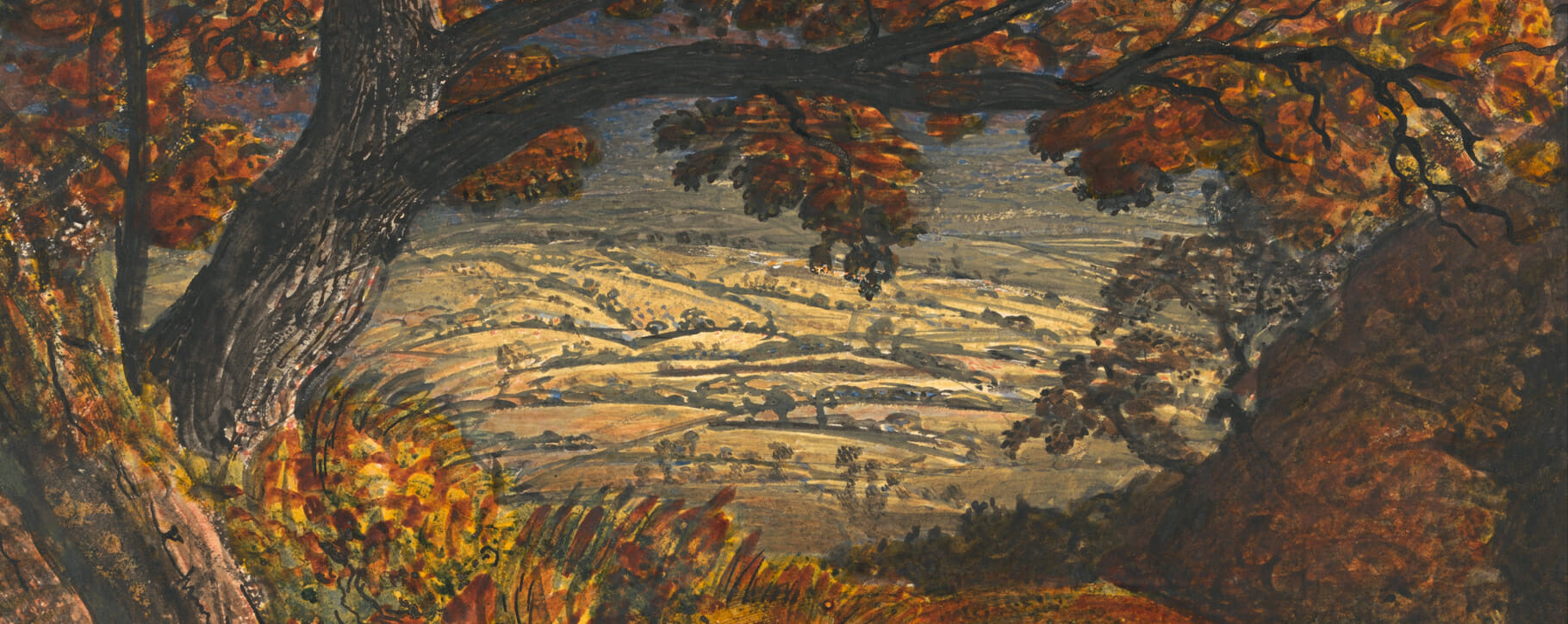 Above: a watercolour painting entitled ‘The Weald of Kent’ by Samuel Palmer, 1833-34
Above: a watercolour painting entitled ‘The Weald of Kent’ by Samuel Palmer, 1833-34 Above: a detail from Pegwell Bay, Kent – a Recollection of October 5th 1858 by William Dyce, dated to 1860
Above: a detail from Pegwell Bay, Kent – a Recollection of October 5th 1858 by William Dyce, dated to 1860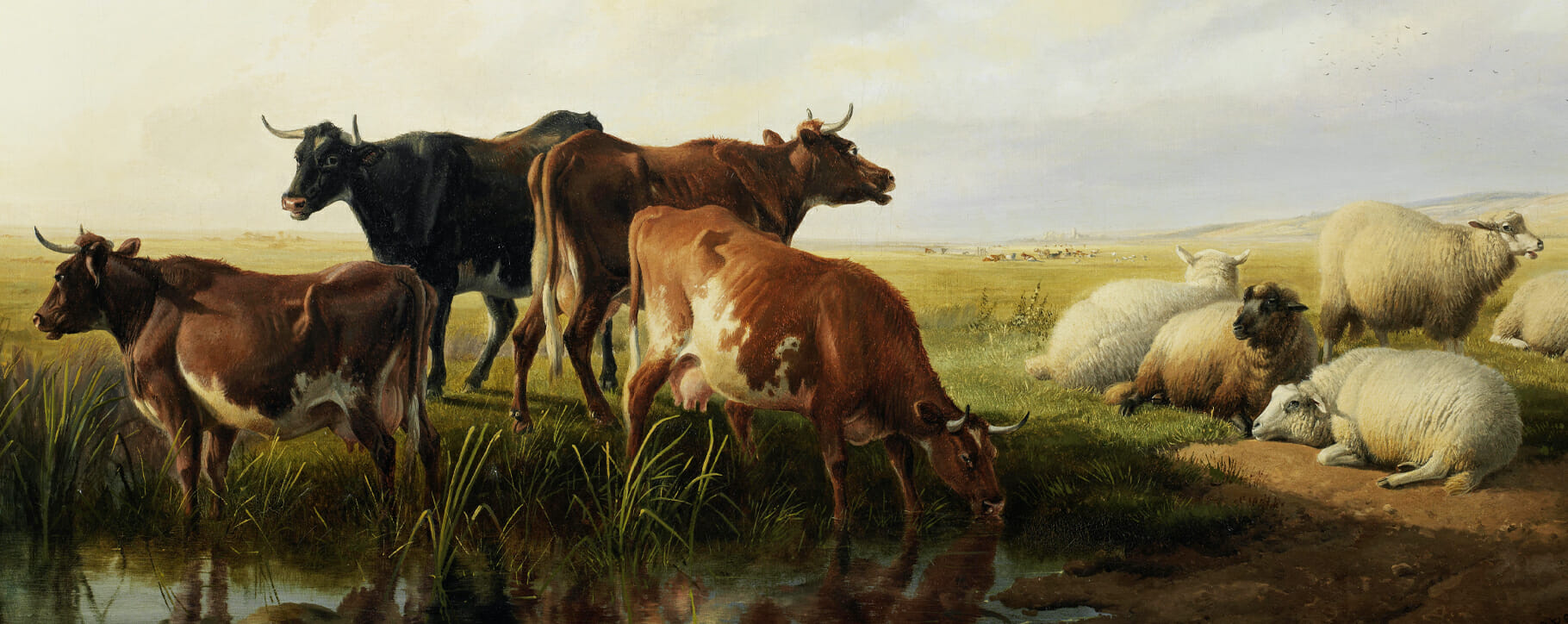 Above: Thomas Sidney Cooper’s Cattle and Sheep Resting dated to 1880
Above: Thomas Sidney Cooper’s Cattle and Sheep Resting dated to 1880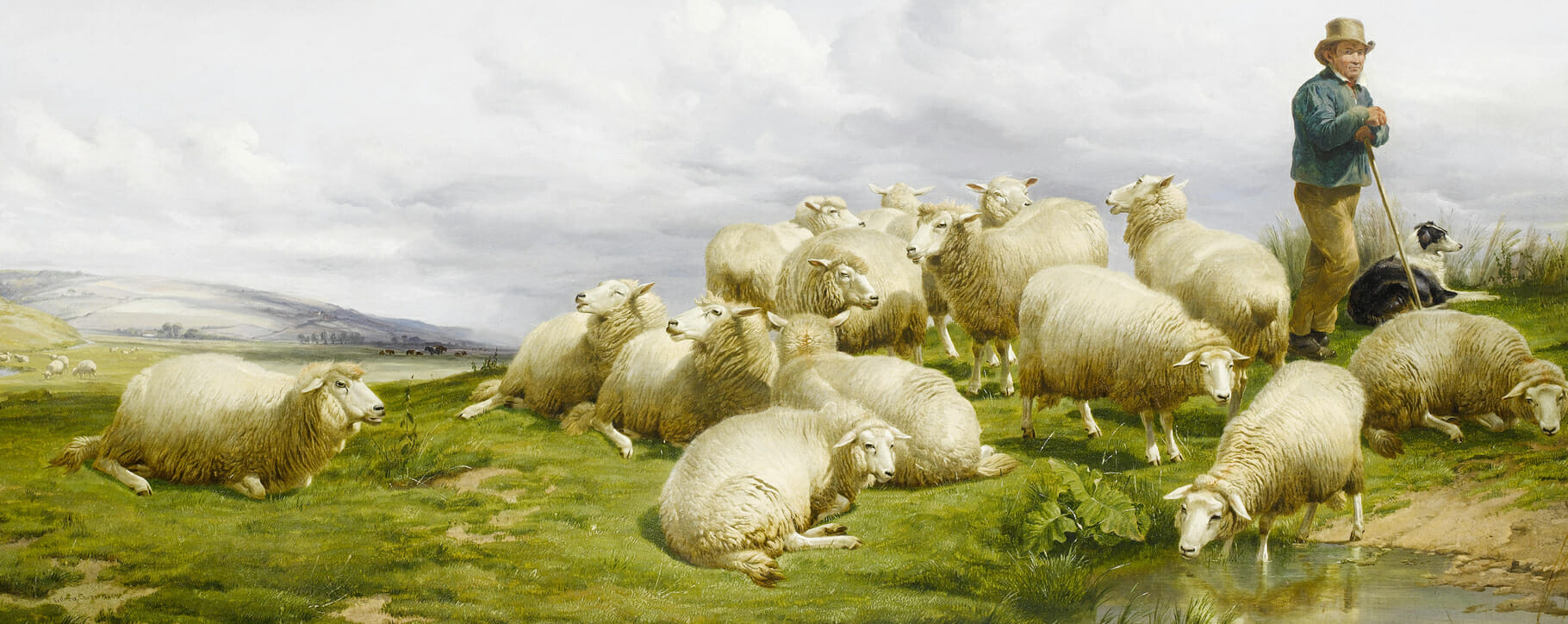 Above: a detail from Thomas Sidney Cooper’s Shepherd with Sheep from 1868
Above: a detail from Thomas Sidney Cooper’s Shepherd with Sheep from 1868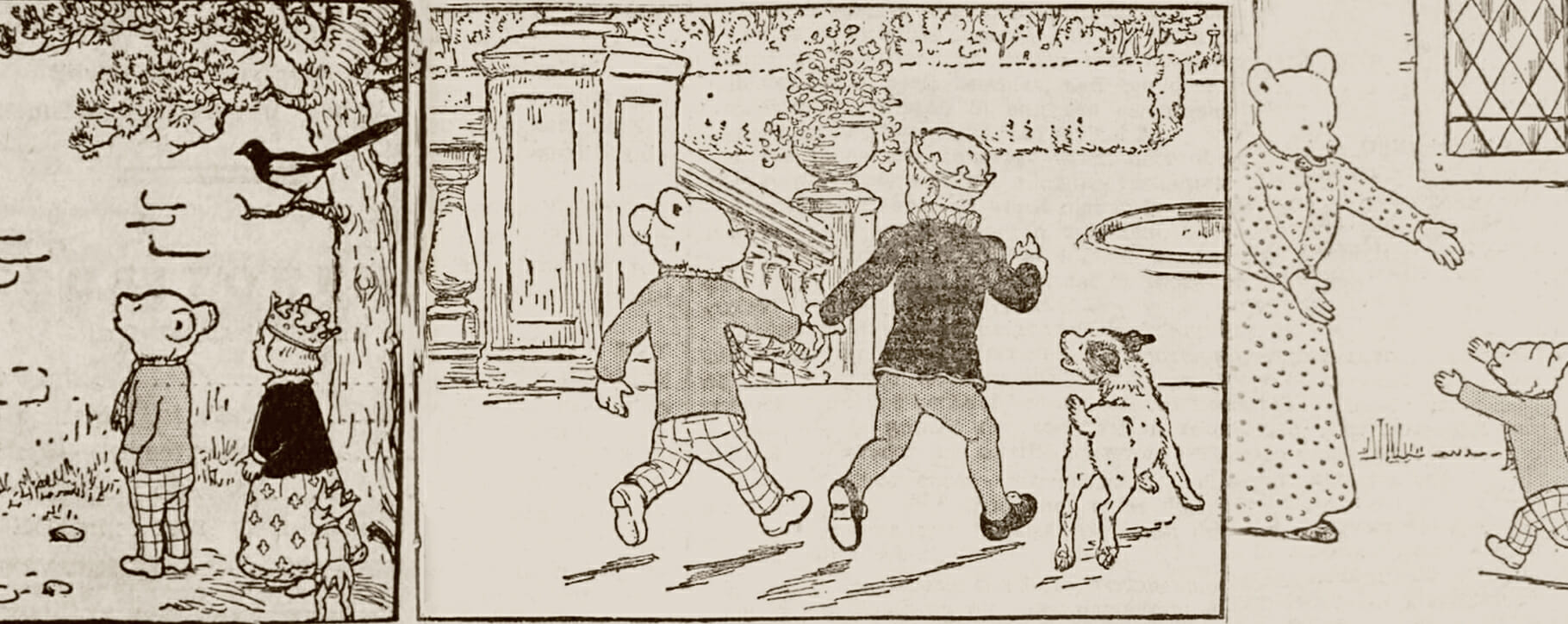 Above: Rupert Bear comic strip illustrations by Mary Tourtel
Above: Rupert Bear comic strip illustrations by Mary Tourtel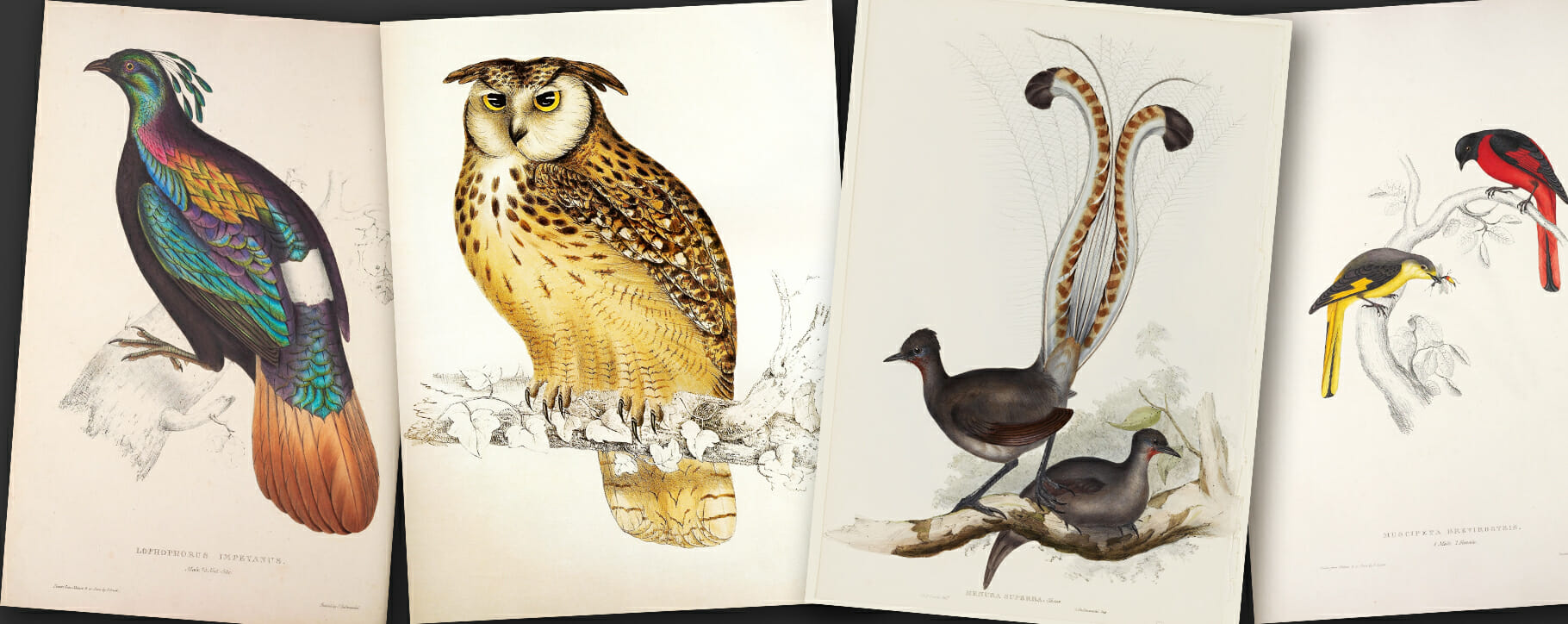 Above: illustrations of birds by Elizabeth Gould for various scientific collections
Above: illustrations of birds by Elizabeth Gould for various scientific collections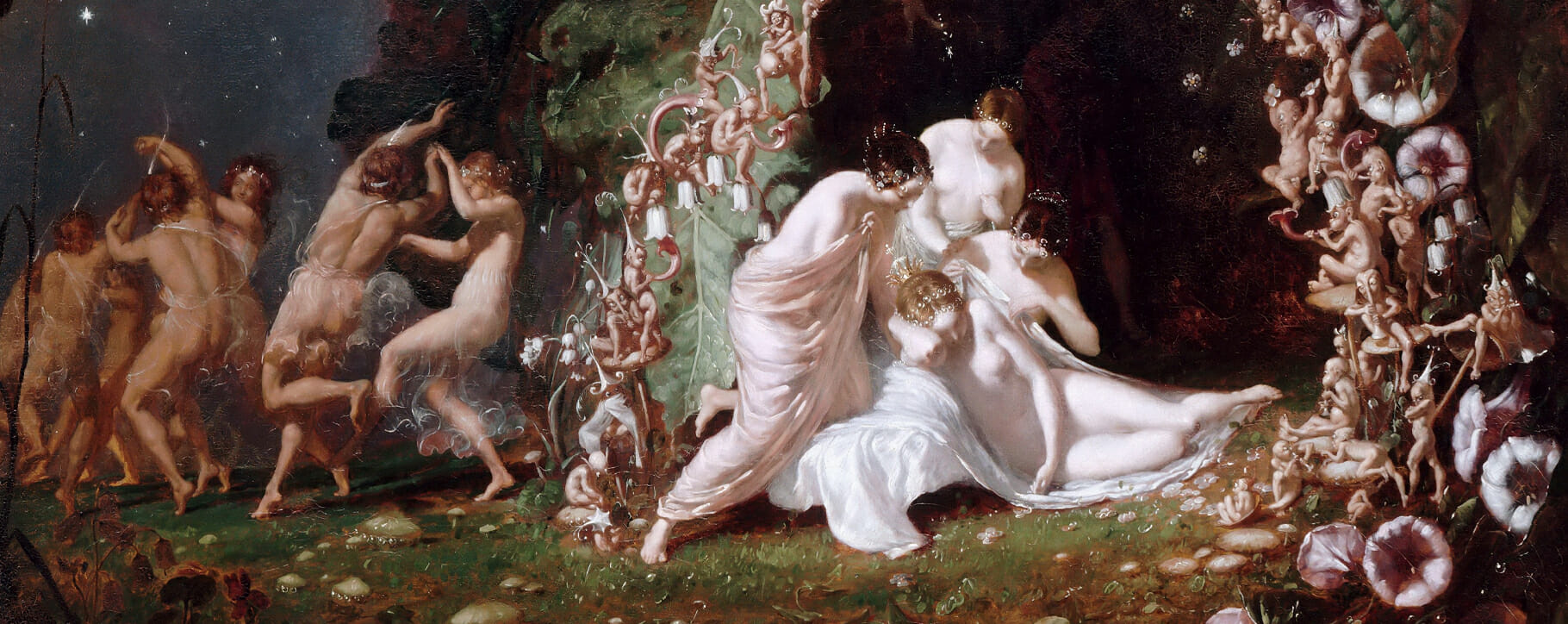 Above: a detail from Richard Dadd’s Titania Sleeping dated to 1841
Above: a detail from Richard Dadd’s Titania Sleeping dated to 1841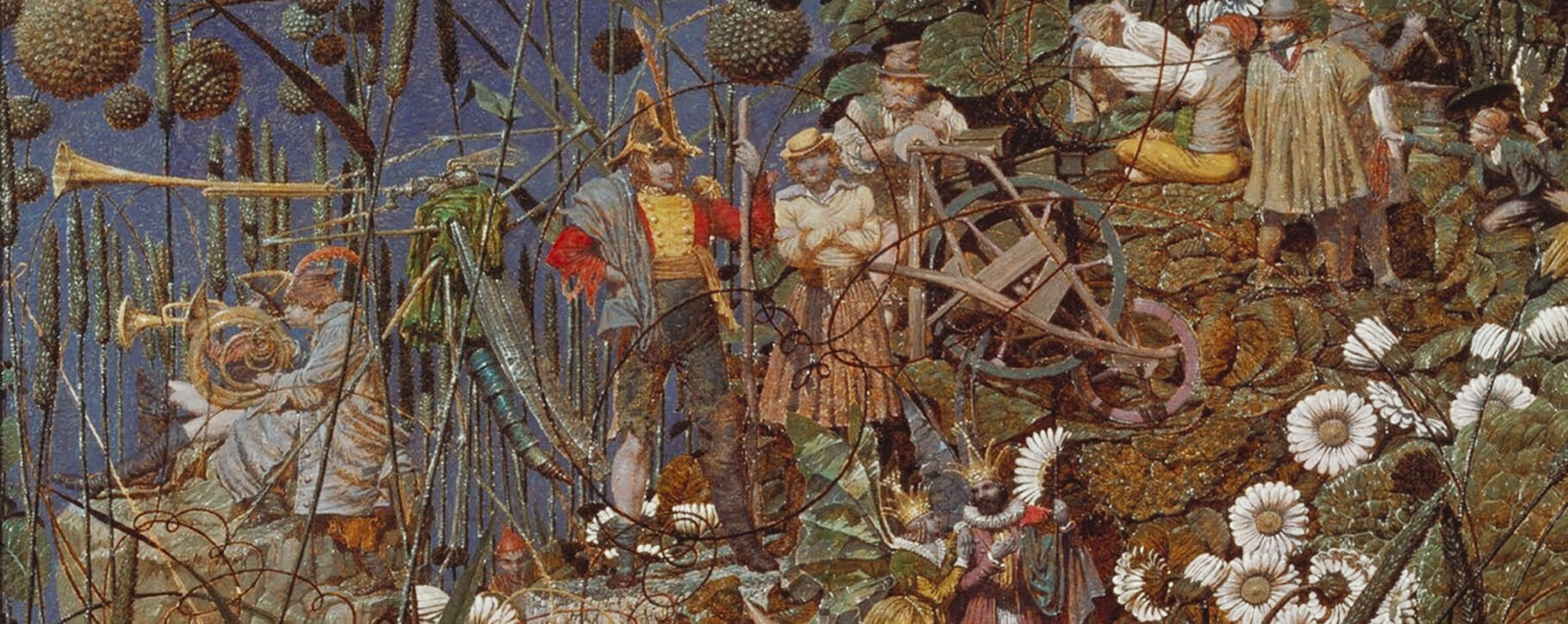 Above: a detail from Richard Dadd’s The Fairy Feller’s Master-Stroke from 1855
Above: a detail from Richard Dadd’s The Fairy Feller’s Master-Stroke from 1855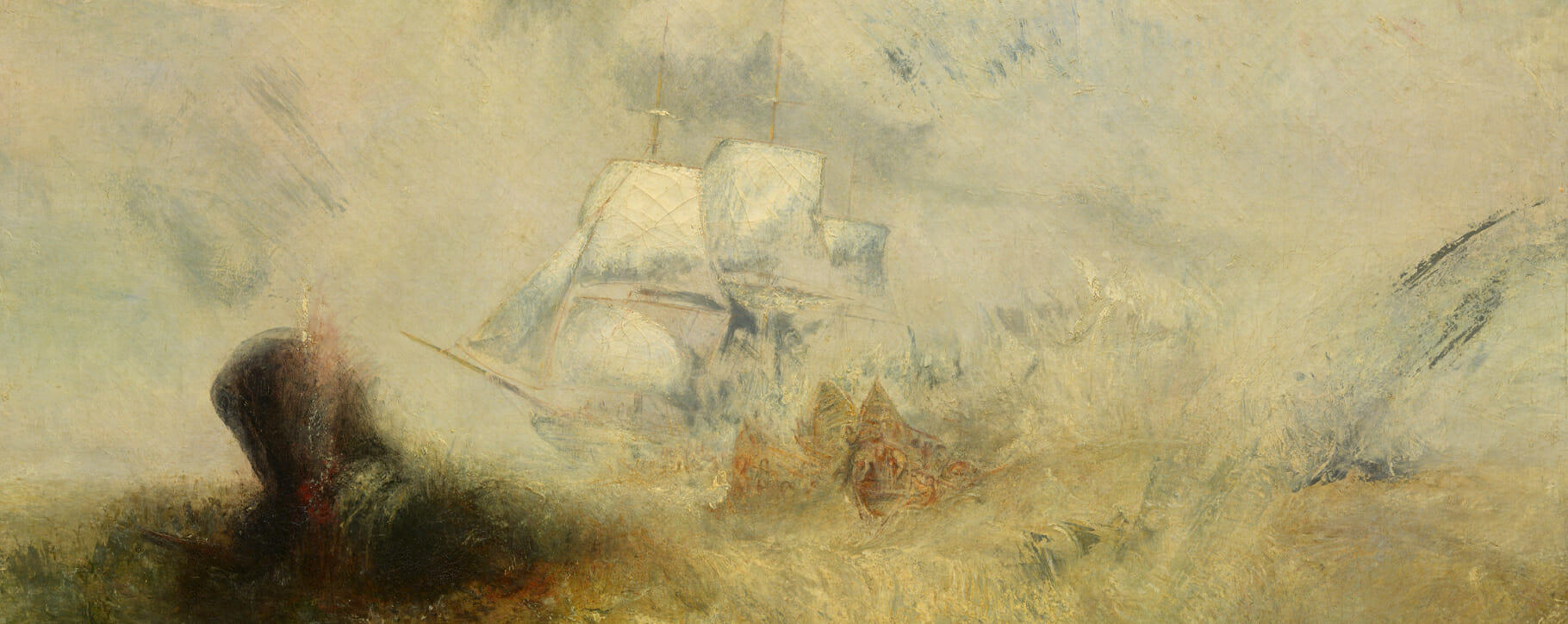 Above: a detail from Whalers by Turner dated to 1845
Above: a detail from Whalers by Turner dated to 1845




